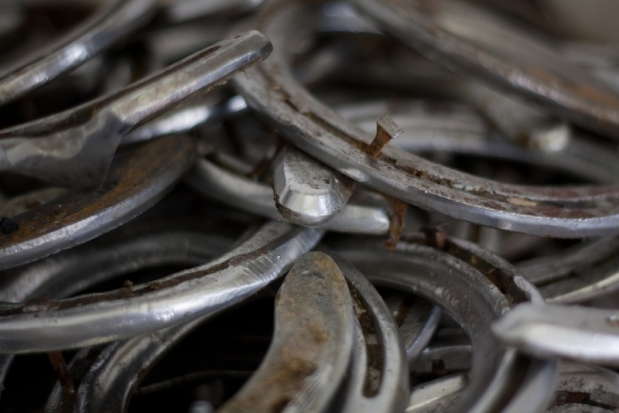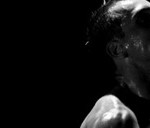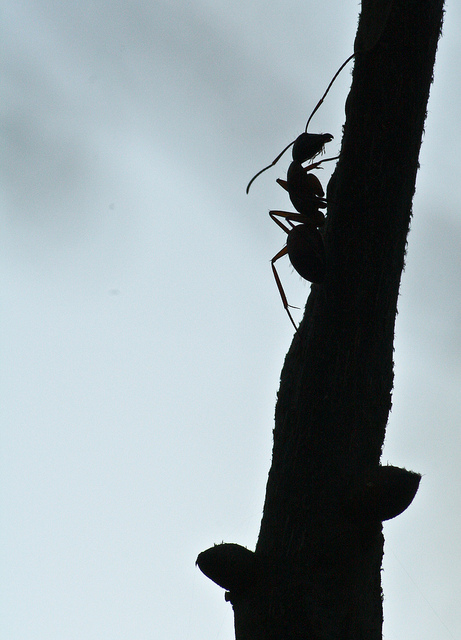Have you ever wondered what the term 'stop down' really means? Wonder no more!
August is a metallic month

Hello lovely people! If you haven't guessed from my Twitter stream, I'm utterly glued to the Olympics at the moment. Apart from it producing some fantastic photography, it's also par-for-the-course because as anyone who knows me will confirm, I'll watch, or listen to, just about any sport going and I've been known to participate a bit, too. I get very excited and jump up and down and scream and shout. And I'll admit that I can cry on occasion.
Anyway, all of that is my rather round-about preamble to announcing our tenuously Olympic-themed competition. Think of all those glorious gold, silver, and bronze medals made out of shiny, shiny metal. Mmm shiny! Yes, we're looking for metallic images throughout August. From antique jewellery to modern art installations that you don't quite understand, we'll take it all. It just has to be metal.
The glinting entry to catch our eyes will win a 12" Fracture.
Entries can be submitted to the Small Aperture Flickr pool from today (Friday 3 August) until Friday 31 August 2012. That gives you four weeks. But please remember that it's one entry per person, so pick your best.
I've had a couple queries about what we look for when we're selecting the winners. Both Haje and I have written on the subject of winning photography competitions, so you might want to look at those articles. It's probably also worth knowing that for both us, the story in your image is key. Haje's a stickler for good lighting, I'm hot on composition, and if Gareth joins the party he'll always comment on sharpness.
For reference, I shall reproduce the rules, but all that remains is for me to wish you good luck and tell you how much I'm looking forward to your entries!
The Rules
- If you decide to enter, you agree to The Rules.
- You can’t be related to either me or Haje to enter.
- One entry per person – so choose your best!
- Entries need to be submitted to the right place, which is the Small Aperture Flickr group.
- There’s a closing date for entries, so make sure you’ve submitted before then.
- You have to own the copyright to your entry and be at liberty to submit it to a competition. Using other people’s photos is most uncool.
- It probably goes without saying, but entries do need to be photographs. It’d be a bit of strange photo competition otherwise.
- Don’t do anything icky – you know, be obscene or defame someone or sell your granny to get the photo.
- We (that being me and Haje) get to choose the winner and we’ll do our best to do so within a week of the competition closing.
- You get to keep all the rights to your images. We just want to be able to show off the winners (and maybe some honourable mentions) here on Pixiq.
- Entry is at your own risk. I can’t see us eating you or anything, but we can’t be responsible for anything that happens to you because you submit a photo to our competition.
- We are allowed to change The Rules, or even suspend or end the competition, if we want or need to. Obviously we’ll try not to, but just so that you know.
If you've any questions, please just ask!
A stunning silhouette for March
Thank you, everyone, for your fantatsic entries in our silhouette-themed photo competition. What a stunning collection of photos made their way into the Flickr pool. The winner, though, is this stand-out image, Ant on a twig:
Oh it's a simple photo, but it has been tremendously well executed. The detail and sharpness of the ant is superb. It's a wonderful example of a silhouette. Congratulations Drew Eldridge!
The lovely people at Fracture are kindly providing a 12" Fracture as a prize for Drew.
April's competition will be opening within the next day or so, so please keep tuned for that. Don't forget, though, that you can always keep up-to-date with the latest competition news - and other photographic shenanigans - by following @SmallAperture on Twitter.
Sharpening photos in the darkroom

In the past, we’ve covered why it is important to sharpen your photos, and how you can use the Unsharp Mask tool in Photoshop to make sure your photos look their best.
I am a firm believer of understanding how things are done manually, however. If you are to take shortcuts, you have to know the long road to get there first. So… If you have a darkroom, how can you sharpen your images without letting the film go anywhere near a computer?
Here’s how…
In the old days, limited film and lens quality kept the sharpness away from photography. When the negative techniques started evolving, and lenses and film became the bottlenecks, people started to experiment with ways to improve the image in various ways. Contrast became one of the first improvements, but this was comparatively easy to correct in the darkroom. Now sharpness was a different thing altogether.
The first cameras used horribly show shutter times; This increases the chance of camera and/or subject movement. Slight focussing problems also frequently occurred. Remember that a regular 24 x 36 mm negative is enlarged significantly, and even the tiniest blurriness becomes visual: Which is why some bright soul came up with a way to sharpen the final results.
How to…
 If you want to have a go at using unsharp masking in the darkroom (heh – if you want to put yourself through stuff like that, let me tell you; I like you), here is a concise guide how it can be done. I have had a lot of surprises when using this technique – mostly positive surprises, but every now and then, things go very wrong. Even then, it looks interesting, if nothing else.
If you want to have a go at using unsharp masking in the darkroom (heh – if you want to put yourself through stuff like that, let me tell you; I like you), here is a concise guide how it can be done. I have had a lot of surprises when using this technique – mostly positive surprises, but every now and then, things go very wrong. Even then, it looks interesting, if nothing else.
Right. Take the negative you want to have sharpened, and place it on a photographical-grade glass plate. Underneath the glass plate, put some unexposed film. Now, make a contact copy of the film, and develop the film from under the glass plate. That should leave you with a positive copy of your negative. This copy will be ever so slightly blurred (because of the glass plate), which is exactly what you want. Align the two film strips, and put them both in your enlarger.
Right – let’s have a look what has happened now. Theoretically – if the contact copy was 100% exact, you shouldn’t be able to see through your negative. Why? Well – what was light in your original negative should now be dark in your positive (effectively a slide), and all the gradations should be cancelling each other out. However, you don’t have (and didn’t want) an exact copy – you need the small differences. When turning on your enlarger, you will see a strange outline of your image.
This outline consists of the original highlights (which were black in your negative – cause it’s a negative, remember?), and the blur is introduced into the transitions in the shadows of the image. What this means? Well – your shadows will ‘take more space’ in the image, and eat into the blurred edges of your original negative.
So – what you’ll want to do is to just briefly flash this unsharp mask on your photographic paper, and then expose the paper normally, using only the negative.
You should be able to tell the difference between pictures that have / have not had this done to them.
So how long should you flash the enlarger? I wish I could tell you. I have spent endless days in darkrooms, and eventually it becomes second nature. You can tell approximately how much exposure a particular unsharped image needs – just keep practising, and bracket all your tries (yes – half step bracket your unsharp masked image, and then see what works best. Take notes to find out exactly how you can make it all come toghether perfectly.)
Good luck!







